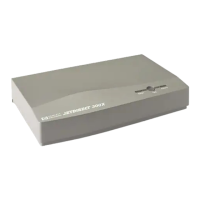5
Troubleshooting
Introduction
This
chapter
presents
the
overall
strategy
for troubleshooting failures
on
HP
3000/9x8LX/RX
and
HP
9000 800 Ex5 Class systems,
and
provides some procedures you can follow
that
will
help you isolate most system failures.
The
chapter is organized so
that
you can diagnose failures
in
a logical way from
the
"top
down". Regardless
of
your experience, you can use
the
information
and
procedures
in
this
chapter
to
isolate
and
correct nearly all system
hardware
failures. If a failure occurs
that
is
not
covered here, you should consult more experienced
support
personnel
within
your
organization or contact
the
nearest Hewlett-Packard Response Center for assistance.
Before
taking
any
other
steps
to
remedy a failure, always collect as much information as
possible
about
the
failure. Never swap
out
any
of
the
field replaceable
units
until you have
made
notes
of
the
following:
•
the
failure symptoms
• all indicators
• display information
• system configuration
• number of users
• application
and/
or
tasks being done
at
the
time
of
failure
• any
other
information
that
you could possibly use
to
describe
the
nature
of
the
failure.
Use this information, along
with
the
procedures
in
this
chapter,
to
choose
the
most
appropriate
corrective action. Keep a log
of
all actions you
take
for
future
reference.
If you are
an
experienced service provider, you
may
wish
to
skip
the
procedural sections
and
directly consult
the
error
tables
and
replaceable
parts
sections.
There
are two basic types
of
failures:
•
Hard
Failures
• Soft Failures
Troubleshooting
5-1
